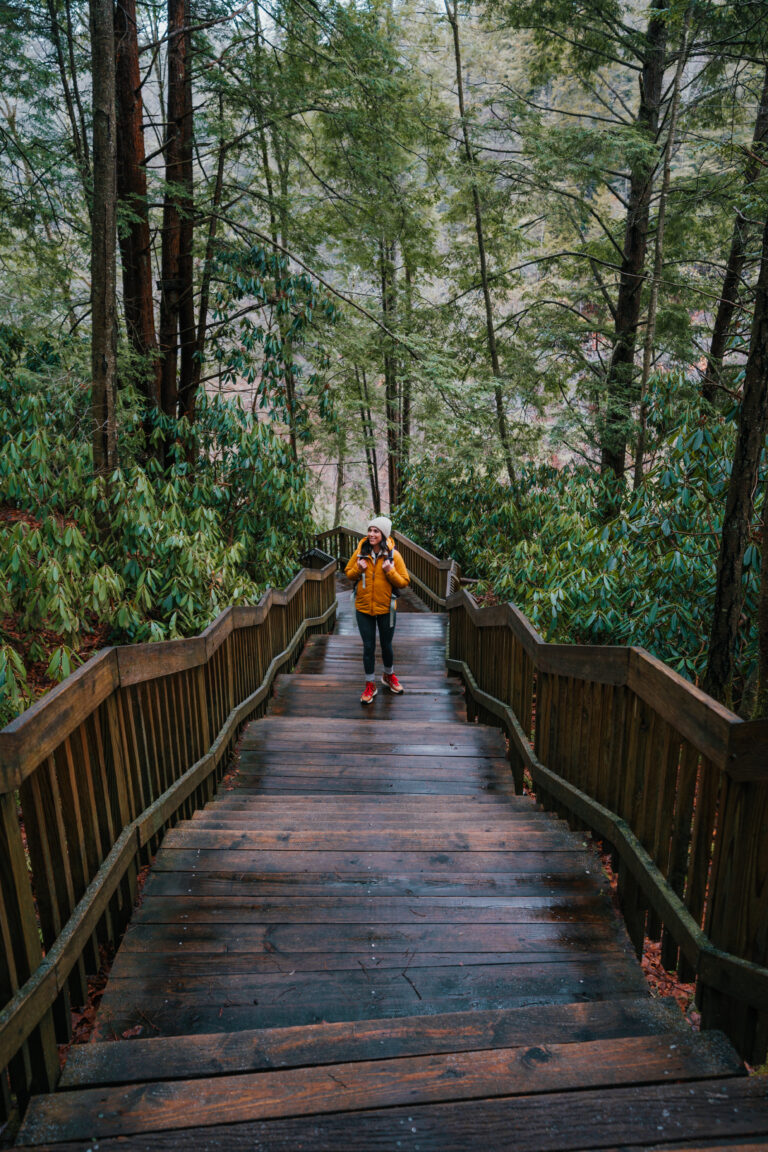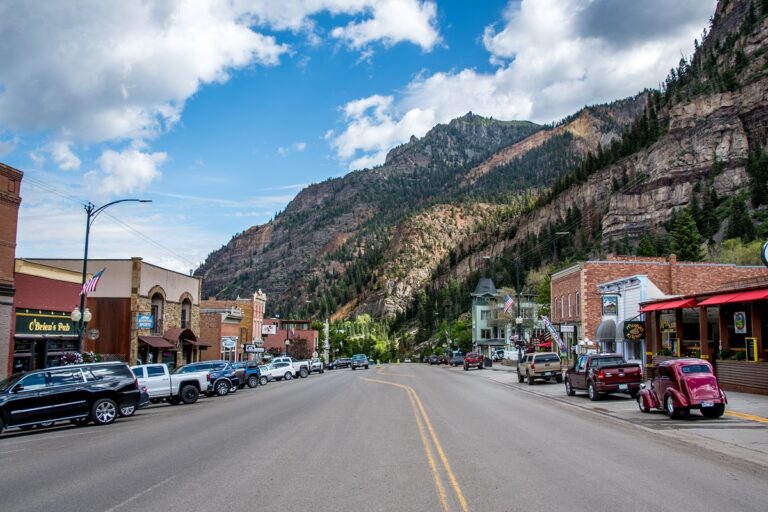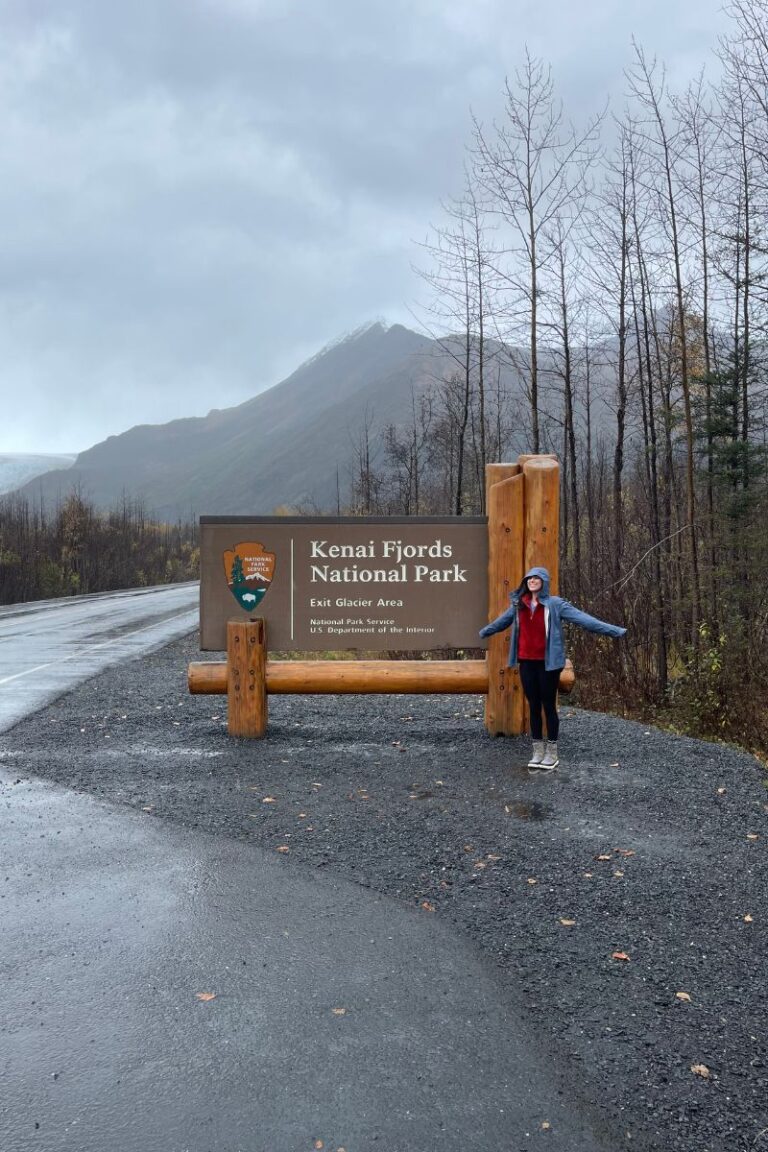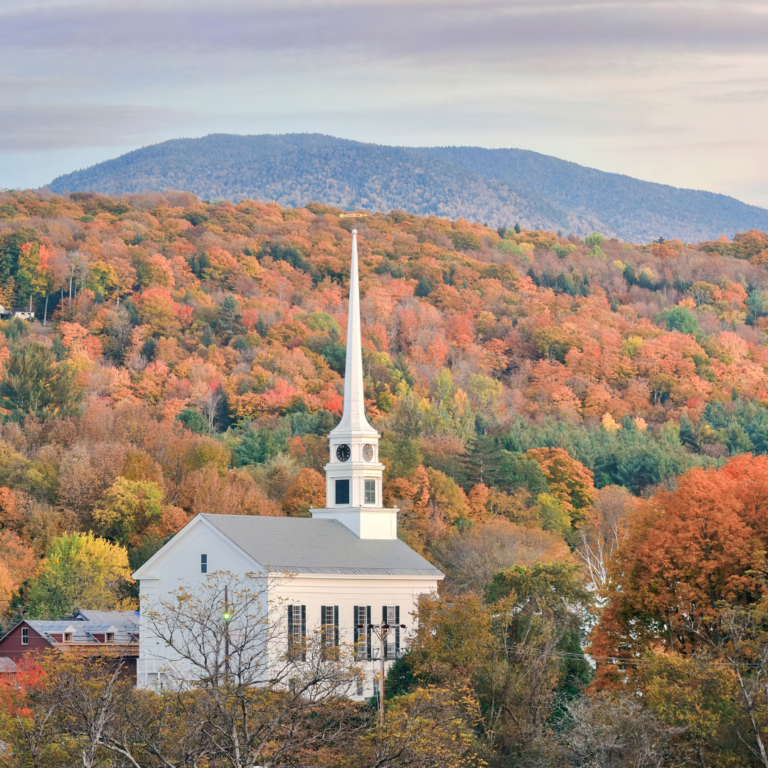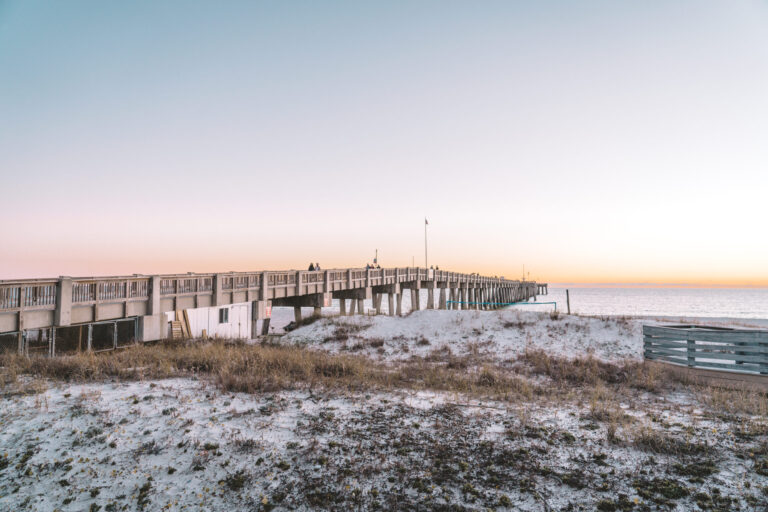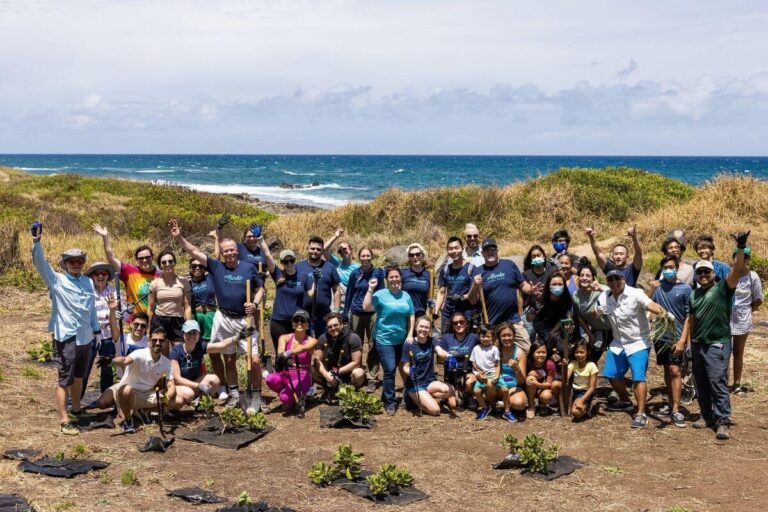The Ultimate 2 Day Death Valley Itinerary
Death Valley National Park might not be the first park you think of when US national parks come to mind, but that doesn’t mean it shouldn’t be on your list! I have been twice now and won’t hesitate to return in the future whenever the opportunity arises.
I feel like the word “underrated” gets thrown around a lot, so I try to use the term sparingly. But I’m telling you, this is an extremely underrated destination. The landscapes are incredibly unique — unlike anything you can see elsewhere in the United States. Imagine being 282ft below sea level (the lowest point in North America) and facing a mountaintop that exceeds 11,000ft in the distance. Sounds crazy, right? The landscapes in Death Valley are nothing short of mind blowing.
You can hit the main attractions within the park in just a few days. In this blog post, I’m sharing everything you need to know to curate a Death Valley itinerary that enables you to make the most out of a brief visit!
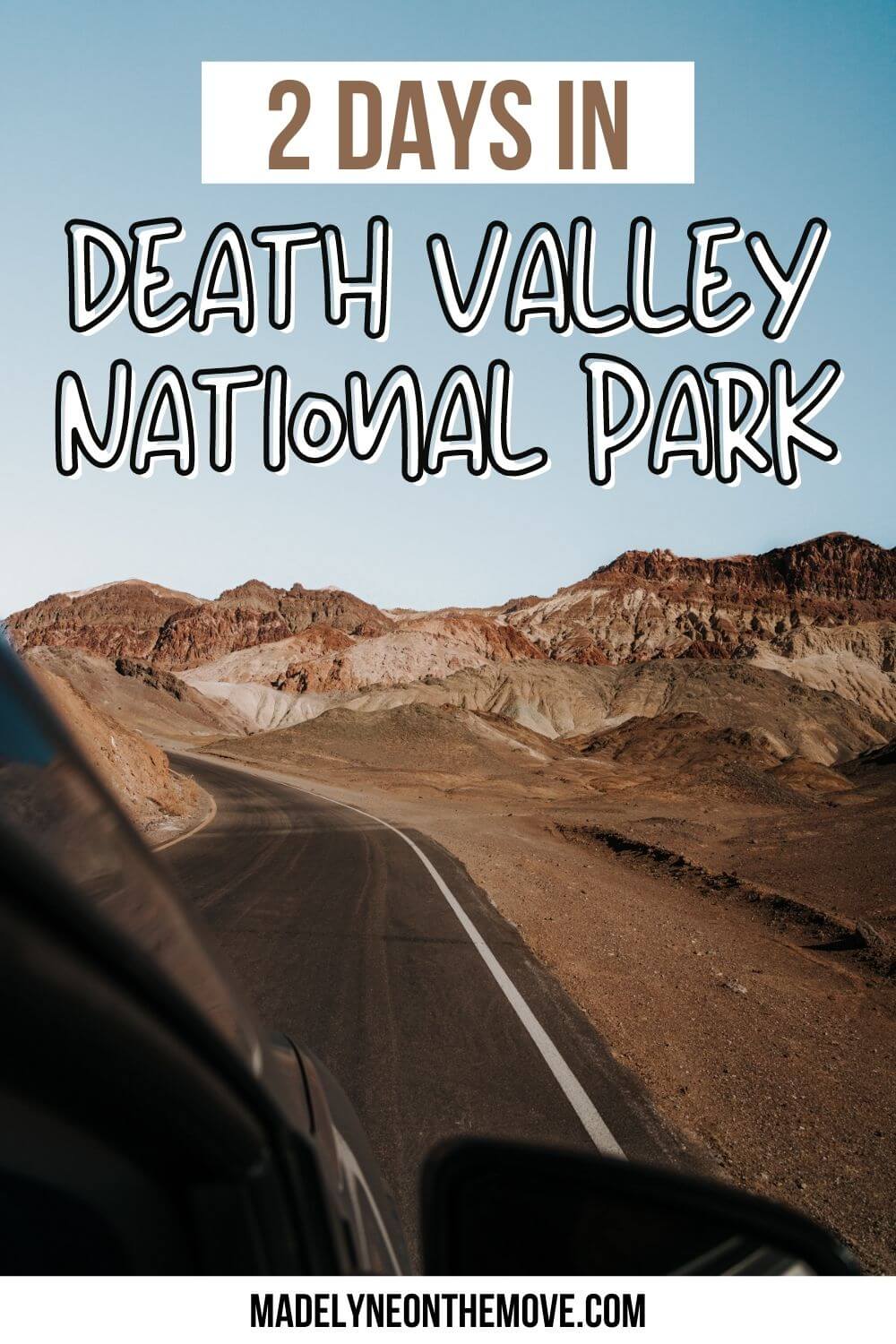
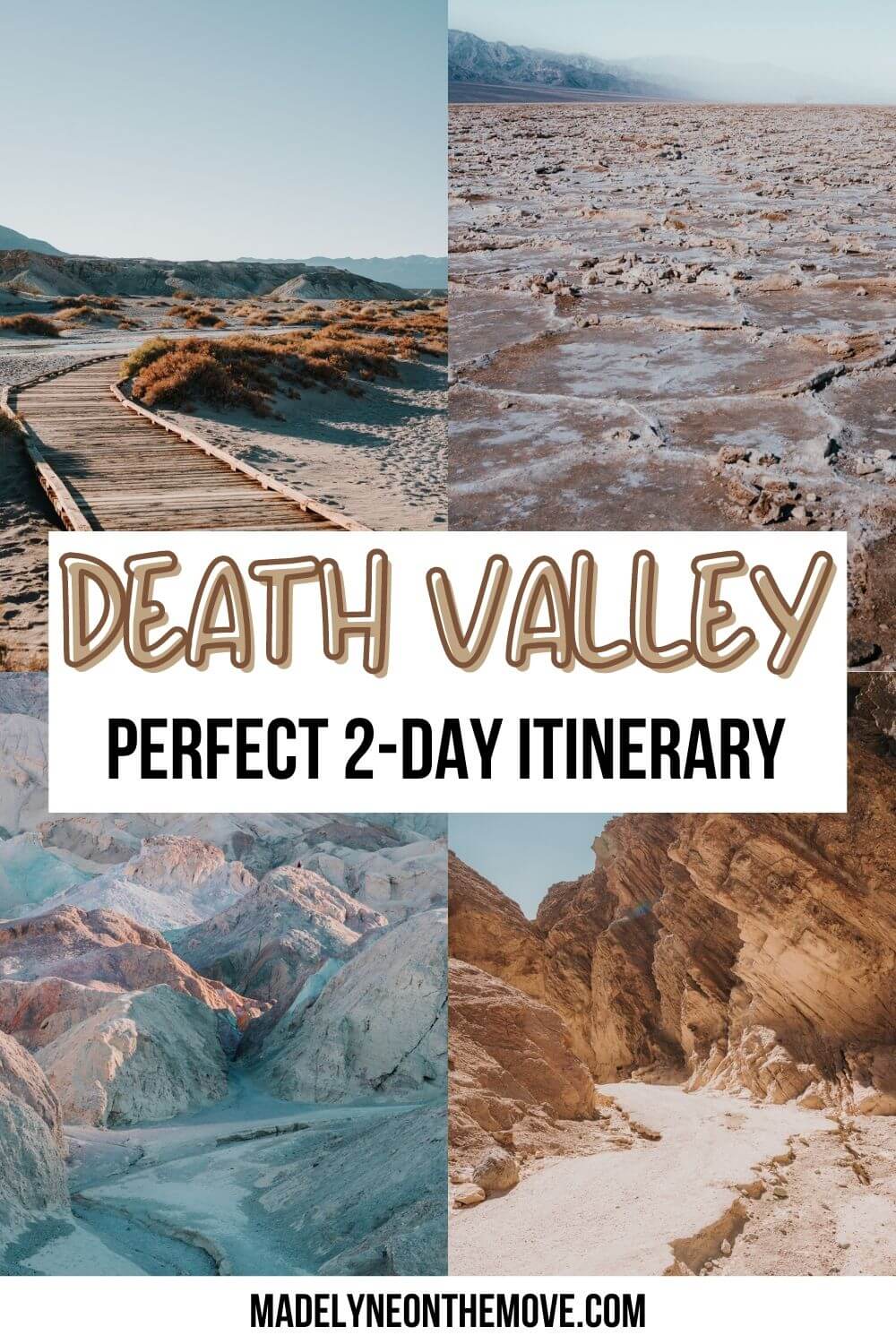
Disclaimer: This blog contains affiliate links which means I earn a small percentage of every purchase at no cost to you. I appreciate your support!
Planning a Trip to Death Valley
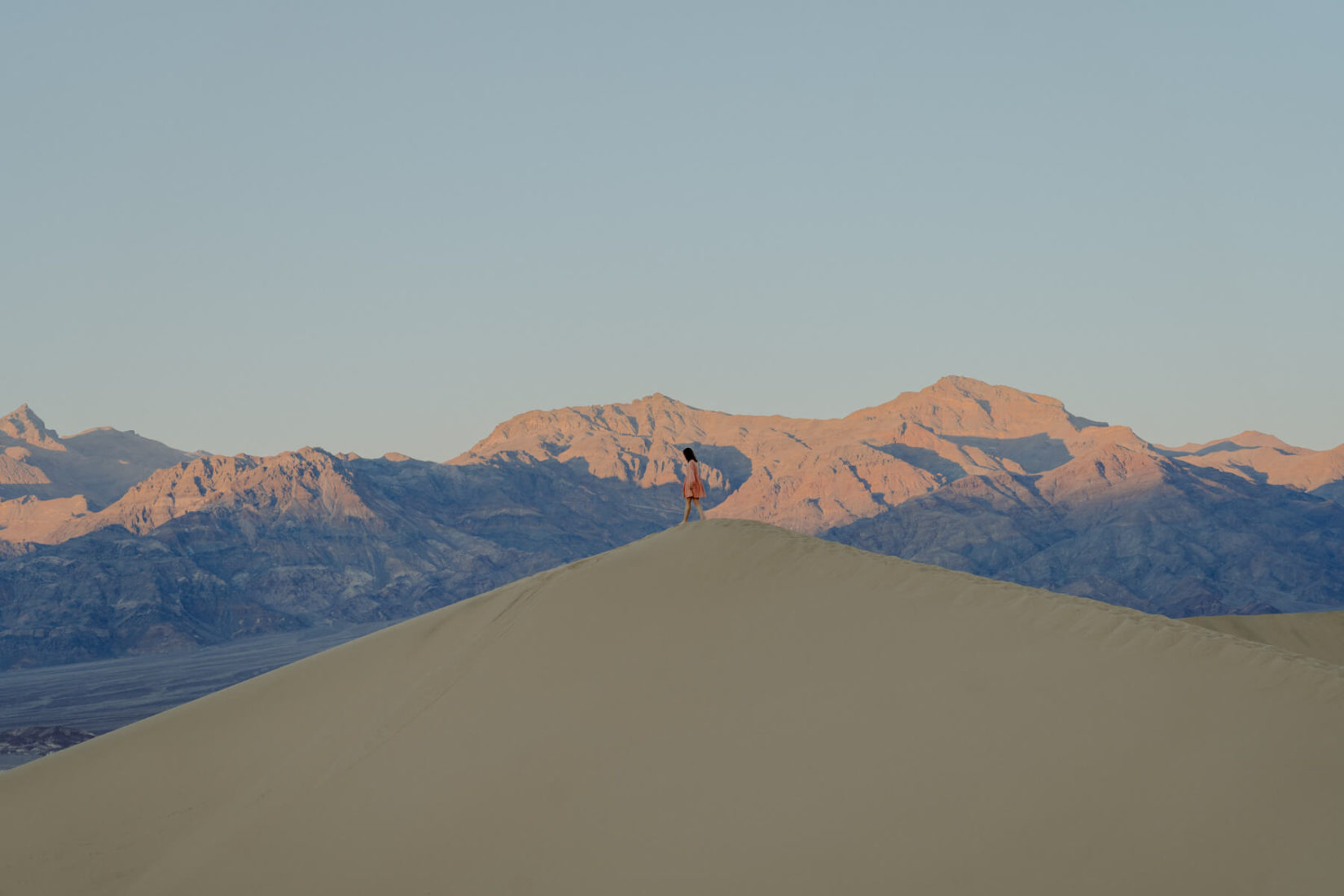
In comparison to organizing a trip to a national park like Yellowstone or Glacier, planning a trip to Death Valley is actually very easy. The main things you need to worry about in terms of a Death Valley itinerary are when you’ll visit, where you’ll stay, and what you want to see within the park — all of which I’m covering in this blog post.
You might be wondering: How many days are needed to explore Death Valley? You can hit the main attractions in 2-3 days, but you won’t run out of things to do should you plan a longer visit! Fun fact: Death Valley National Park is the largest national park in the lower 48. There are plenty of hidden gems to be enjoyed both inside the park and in surrounding areas.
Remember to grab an America the Beautiful Pass to cover your entrance fee to Death Valley (and all other US national parks for one year from the date of purchase)! The annual pass for national parks is well worth the $80 because it saves you from paying $20-35 per vehicle to get into most parks. California alone has 9 national parks including Death Valley!
Important Things to Know
- The McCarran International Airport in Las Vegas is the closest airport to Death Valley National Park.
- Lodging is hard to come by within the park. Unless you’re camping in Death Valley, you won’t get a whole lot of bang for your buck. I prefer to stay in a nearby city like Pahrump, NV or Lone Pine, CA to make my money stretch further.
- Expect to have little to no cell service within the park. Download offline maps and grab a paper map from the Furnace Creek Visitor Center! Also, printing your Death Valley itinerary isn’t a bad idea.
- Food options in the park are limited, so plan accordingly! On days that you plan to explore the park, pack lots of water (more than you think you’ll need) and snacks.
- Keep your gas tank full and fill up outside of the park when possible. You’ll find a few gas stations within the park, which could save you in a pinch but the prices are less than ideal. CA gas prices nearly gave this NC native a full blown heart attack.
When to Visit
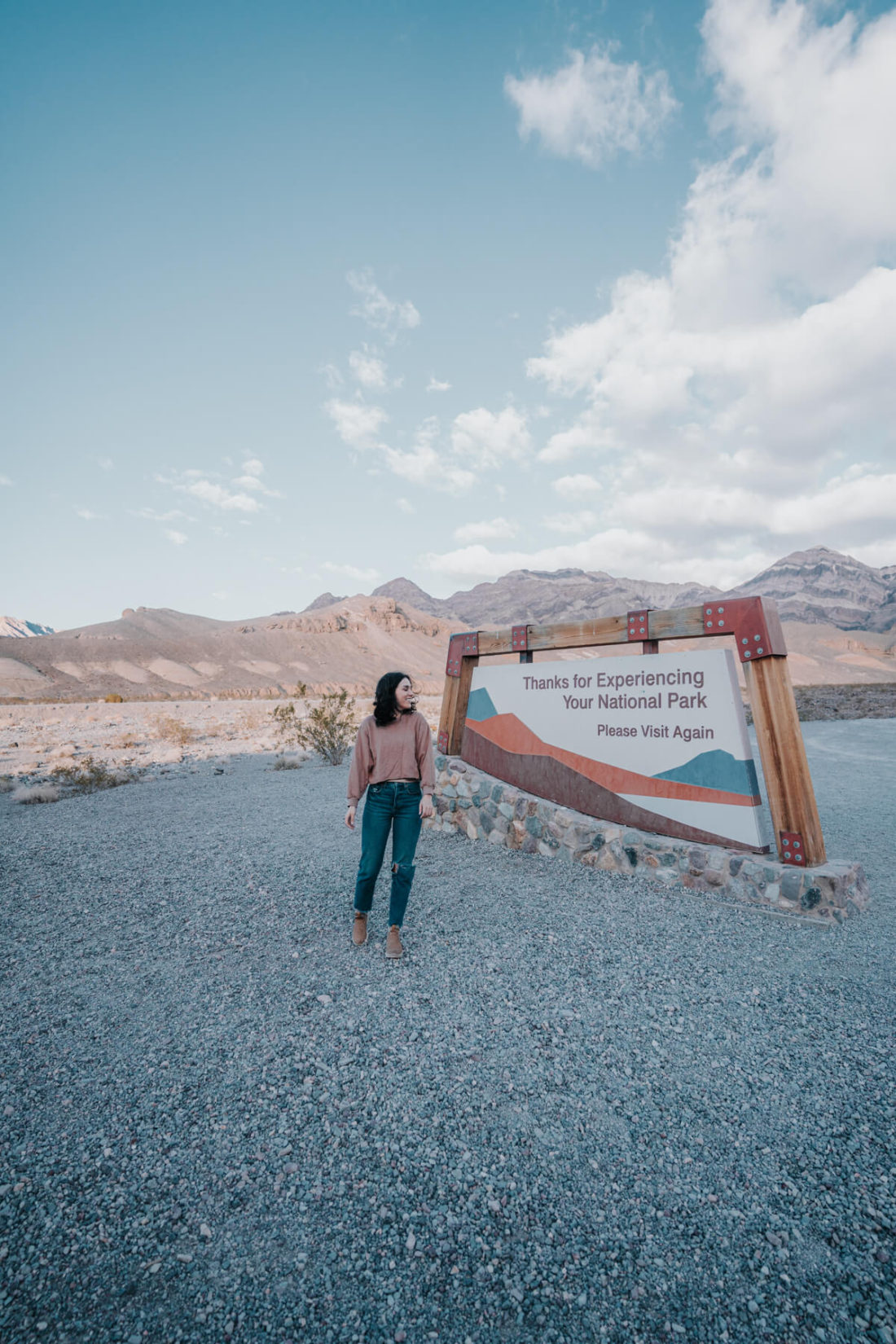
According to the National Park Service, “Death Valley is famous as the hottest place on earth and driest place in North America.” Read more about the weather and climate in Death Valley here.
Death Valley temperatures are no joke. I’ve been during summertime (late June to be specific) and would not recommend planning a summer trip. Like -50/10 would recommend. My rental car said it was 127 degrees Fahrenheit at one point! My summer visit wasn’t the least bit enjoyable despite Death Valley being very drivable. I couldn’t even get out of the car for a few minutes without feeling miserable.
While many of our national parks experience closures during wintertime, Death Valley is the perfect destination for a winter adventure! I was comfortable wearing pants and a t-shirt during the day and a light jacket at night when I visited in January.
Early spring can also be a great time to visit the park, especially if you want to see wildflowers. I recommend that you visit sometime between December and March for the best experience, so keep that in mind when planning your Death Valley itinerary!
Getting to Death Valley
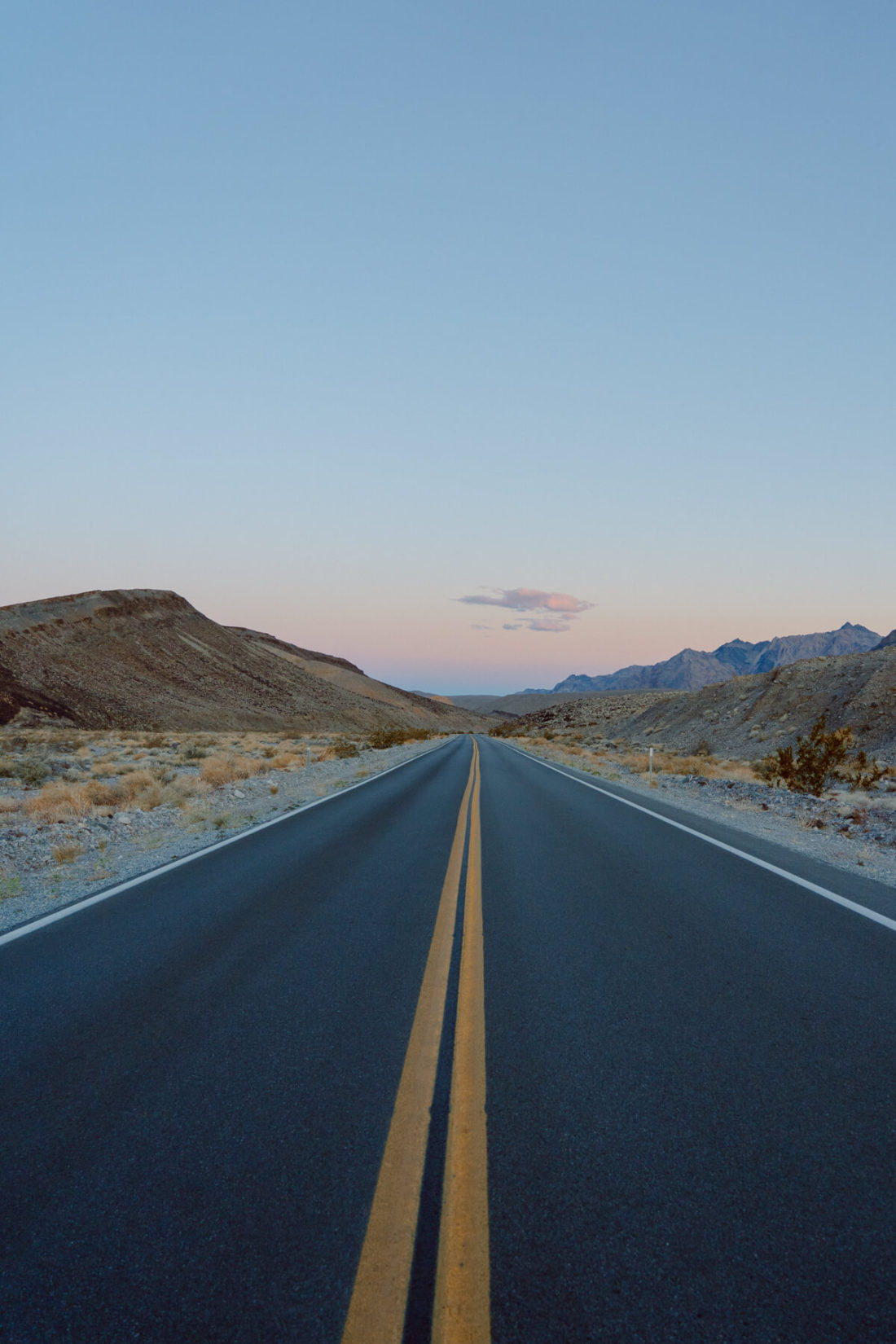
Death Valley might be in the middle of nowhere, but it is easy to find! The scenic drive from Vegas to Death Valley takes around two and a half hours. I highly recommend stopping by Red Rock Canyon on your way out to Death Valley if you’re driving from Las Vegas. You can either do a quick drive through or stop to do some hiking. The America the Beautiful Pass will cover your admission.
If you’re coming from the California side, it’s still easy to get to the park and the drive is beautiful. I’ve driven into Death Valley from Lone Pine, CA, which took right around two hours. The drive from Los Angles to Death Valley takes around 4 hours.
Read More: Road Trip Essentials
Where to Stay
Lodging options are limited in/around Death Valley. However, there are a few options within the park including both hotels and campgrounds. Just know that you don’t get a lot of bang for your buck when it comes to hotels within the park. In short: You’ll pay a premium for the bare minimum. For these reasons, I prefer to stay in a nearby city and drive to the park.
Las Vegas, NV
I guess it’s because I’m from the East Coast, but I always thought partying was the only thing to do in Vegas. Now that I’ve been to the area a few times, I realize how wrong I was!
Death Valley is the perfect destination for a day trip from Vegas. In fact, my first trip to Death Valley was exactly that! The park is just over two hours from the Vegas airport. If you’re going to Vegas for some reason or another, I strongly suggest squeezing in a Death Valley one day itinerary at the very least.
Pahrump, NV
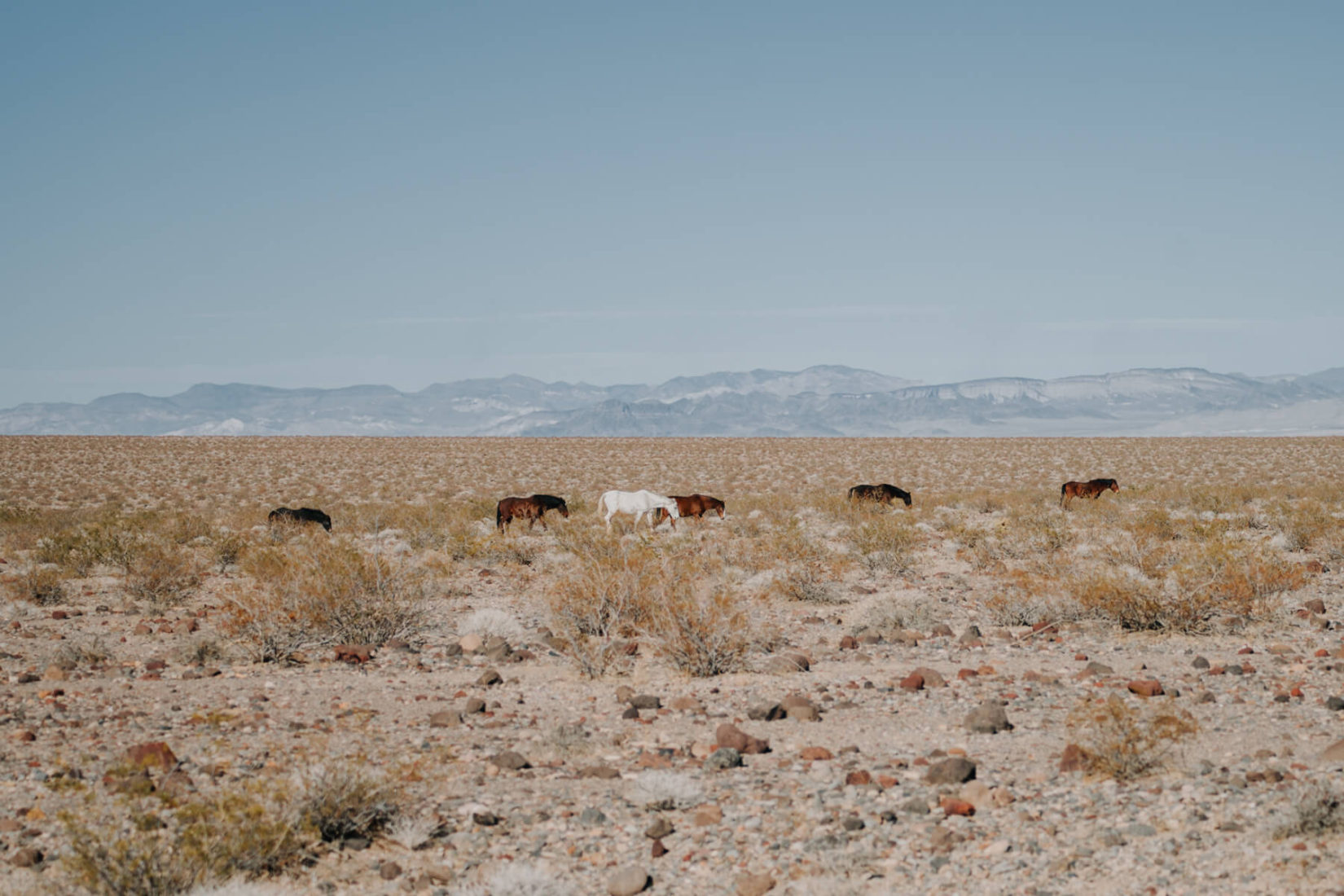
Pahrump is situated halfway between the Vegas airport and Death Valley. Although it’s not technically within the park, I prefer to stay in this small city when visiting Death Valley because it’s easy to find food, gas, affordable lodging, and cell phone service — some of which can be hard to come by in this area!
Stovepipe Wells, CA
Stovepipe Wells Village is a small village located on the western side of Death Valley National Park. You have two options when it comes to lodging in Stovepipe Wells: Stovepipe Wells Village Hotel or Stovepipe Wells Campground. Unless you’re camping in Death Valley, staying within the park can get pretty pricey because options are so limited.
Stovepipe Wells is near Mesquite Flat Sand Dunes, but it’s a bit of a drive from spots like Dante’s View, Zabriskie Point, etc. You’ll drive about an hour to reach these spots, which is something to consider.
Furnace Creek, CA
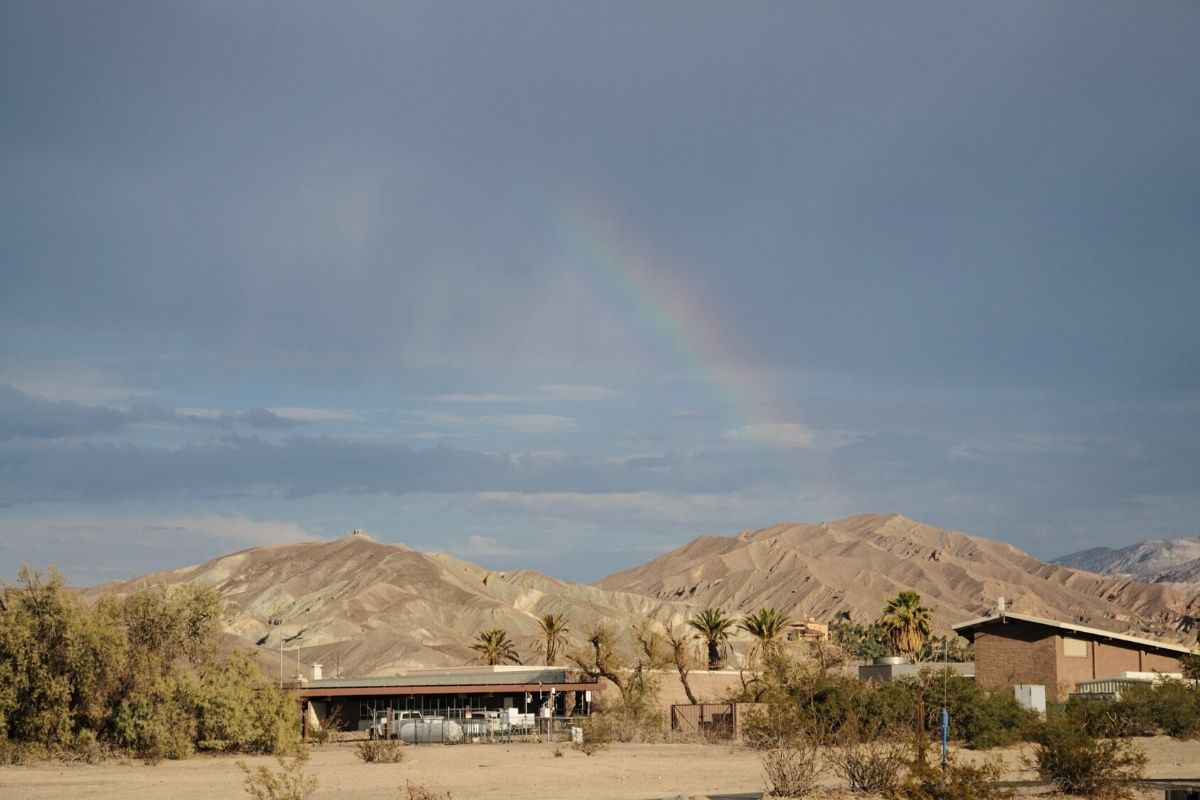
Furnace Creek Campground is conveniently located right in the heart of Death Valley National Park. You’ll find the Furnace Creek Visitor Center just a few minutes away. Unlike the campground in Stovepipe Wells, which is more of a parking lot, Furnace Creek offers a more scenic and relaxing camping experience.
FYI — There are no showers at the Furnace Creek Campground.
Read More: Car Camping Essentials
Death Valley Attractions Map
2-Day Itinerary Death Valley National Park
It takes about two hours (120 miles) to drive through Death Valley without accounting for detours or stops. Overall, I’d say it’s a very drivable park. Just make sure to plan accordingly for the weather, have a map handy (paper map or offline maps), keep your gas tank as full as possible, and pack lots of water and snacks!
I will say that I was very impressed with the road signage in Death Valley. All of the major highlights have road signs to help you navigate. Nonetheless, don’t rely on this method alone.
Remember to grab an America the Beautiful Pass to cover your entrance fee to Death Valley (and all other US national parks for one year from the date of purchase)! The annual pass for national parks is well worth the $80 because it saves you from paying $20-35 per vehicle to get into most parks. California alone has 9 national parks including Death Valley!
Day 1: Zabriskie Point, Golden Canyon, Artists Drive, and Badwater Basin
Start your Death Valley itinerary at the most iconic sunrise location in Death Valley National Park! After marveling at the way the sun casts beautiful colors over the badlands, head over to Golden Canyon to trek through them. You’ll probably be ready for some AC once you get done hiking — the perfect opportunity to sightsee by driving through Artists Drive Scenic Loop. Take a break during the hottest part of the day and then watch the sun go down and stargaze at the lowest point in North America.
Sunrise at Zabriskie Point
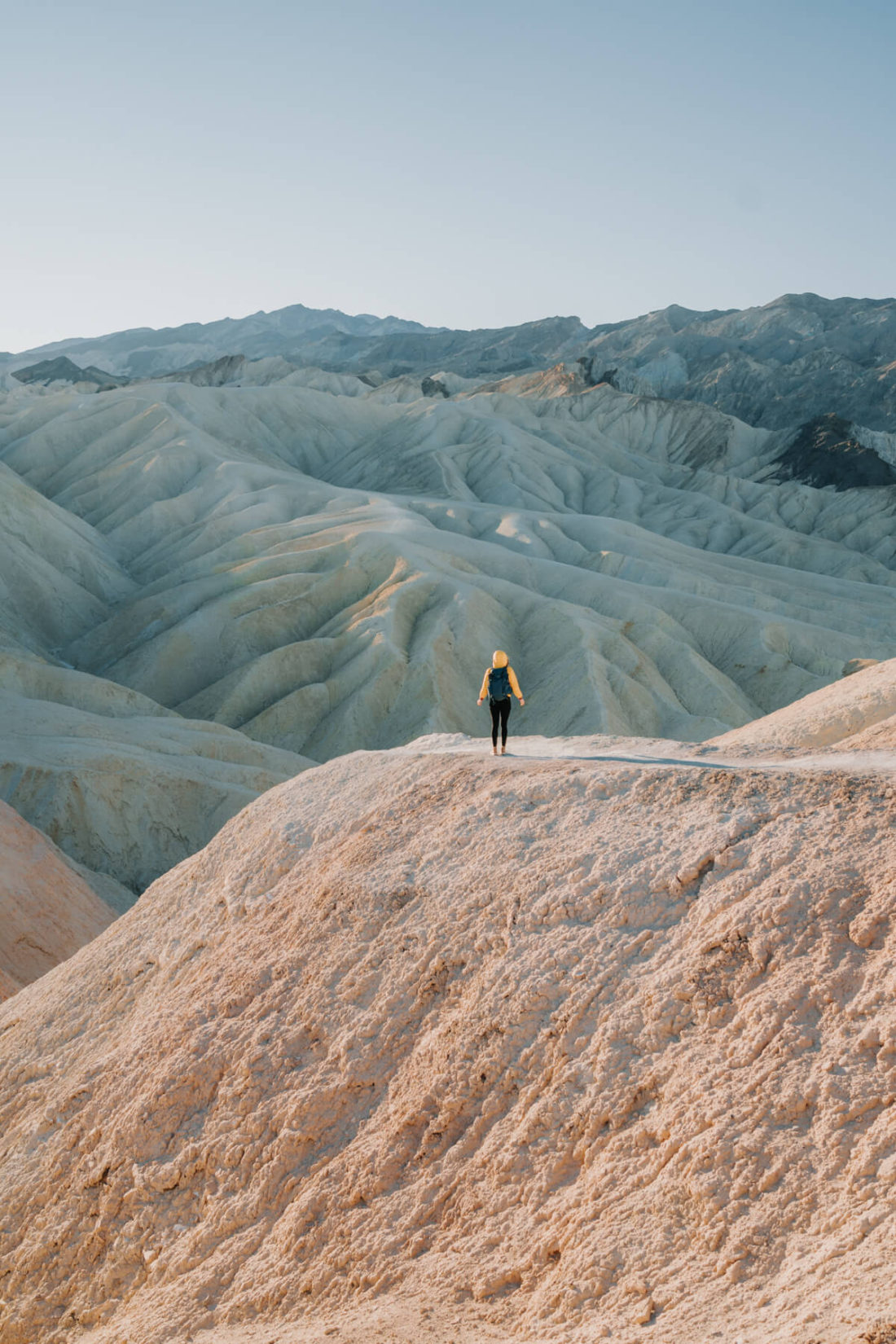
Zabriskie Point is easily one of my favorite spots in Death Valley National Park! The overlook area is located right off Highway 190, making it easily accessible and perfect for sunrise.
I didn’t make it to Zabriskie Point for sunrise the first time I visited Death Valley, but I did the second time around an can confirm that it’s 100% worth the early wakeup call! Watching the sun illuminate the badlands and Panamint Range as it rises over the Amargosa Range behind you is absolutely incredible.
I recommend arriving 30-45 minutes before sunrise to settle in and find a spot before the sun comes up. I wouldn’t necessarily call it a hike, but you do have to walk about a quarter of a mile up a paved trail to get to the viewing area. There’s plenty of room to spread out, which is good news as you’ll likely be sharing this spot with other visitors.
If you want to squeeze a hike in before heading to your next stop, consider Badlands Loop. Check here for other Zabriskie Point Death Valley hikes.
Golden Canyon Hike
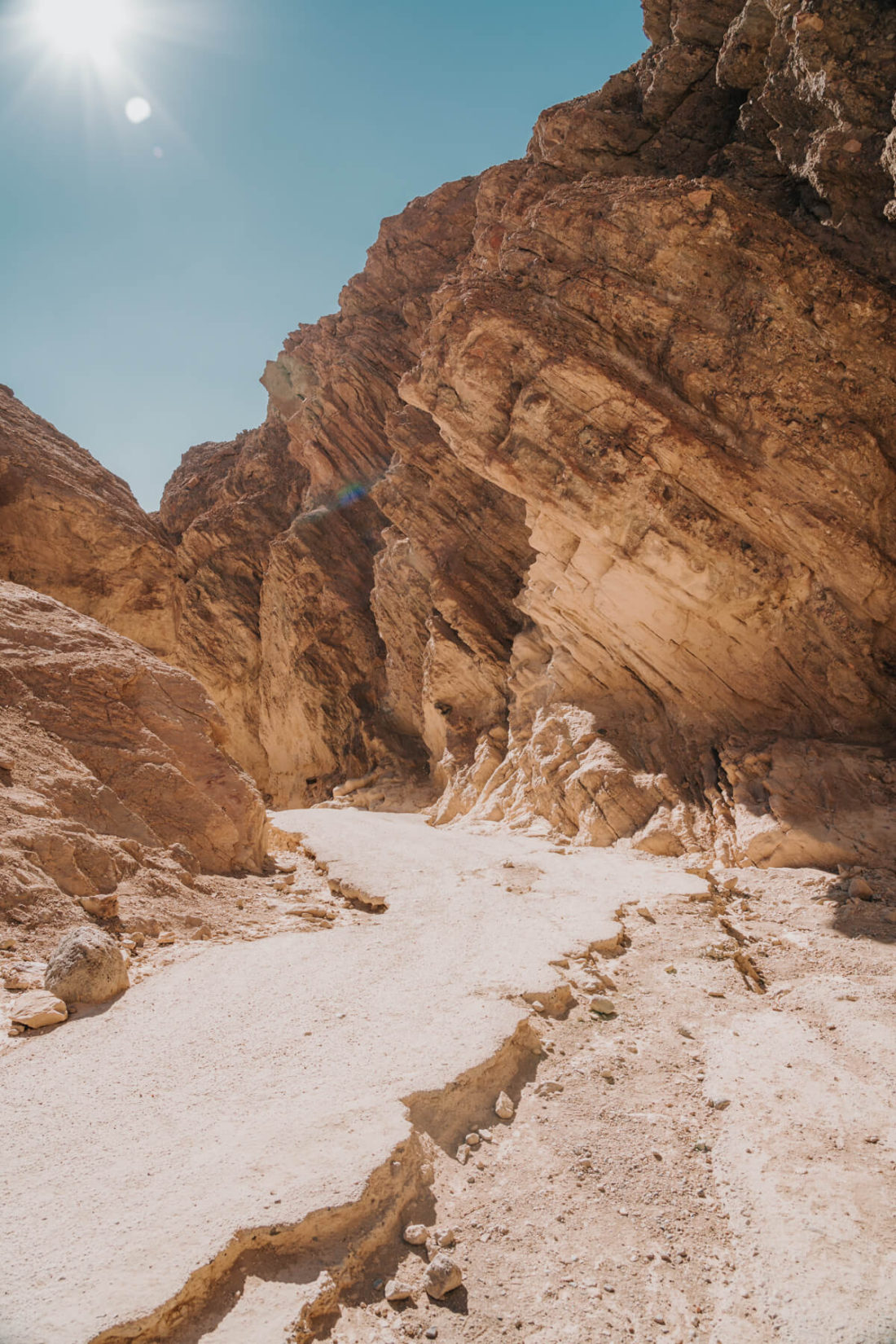
After catching the sunrise at Zabriskie Point, head north on Highway 190 until you pass The Inn at Death Valley on your right. The inn is your sign to turn left onto Badwater Road. Drive for about 5 minutes and you’ll reach the trailhead for Golden Canyon.
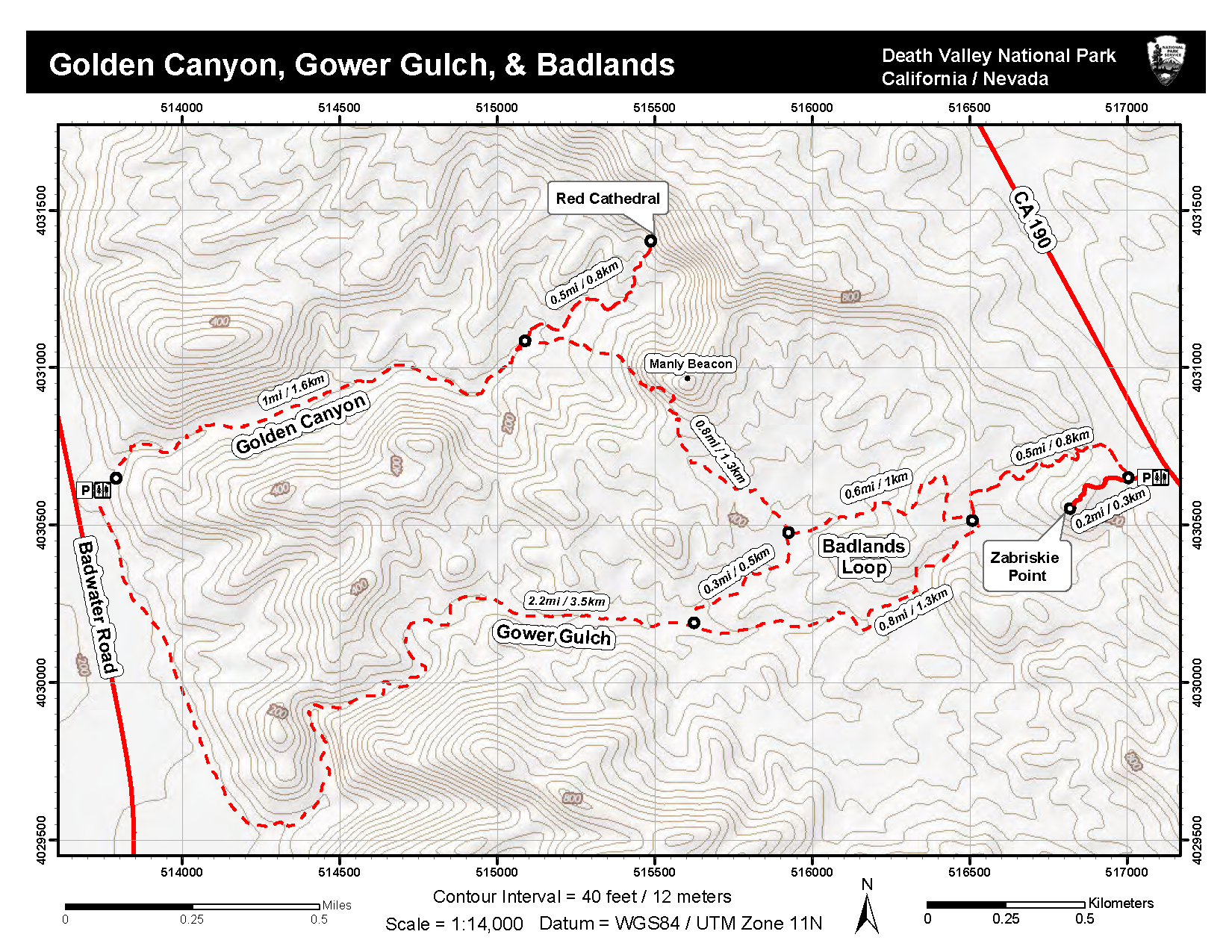
The Golden Canyon hike connects to a few other routes, so you have options! For a shorter hike, consider Golden Canyon Trail to Red Cathedral — a 2.9mi out and back trail that’s moderately difficult. Try the Golden Canyon and Gower Gulch Loop for a bit more mileage.
Remember that Death Valley is one of the hottest and driest places on earth. Make sure you’re familiar with best practices when it comes to hiking in hot weather — wear a hat, carry a hydration pack, avoid the hottest time of day, etc.
Artists Drive Scenic Loop
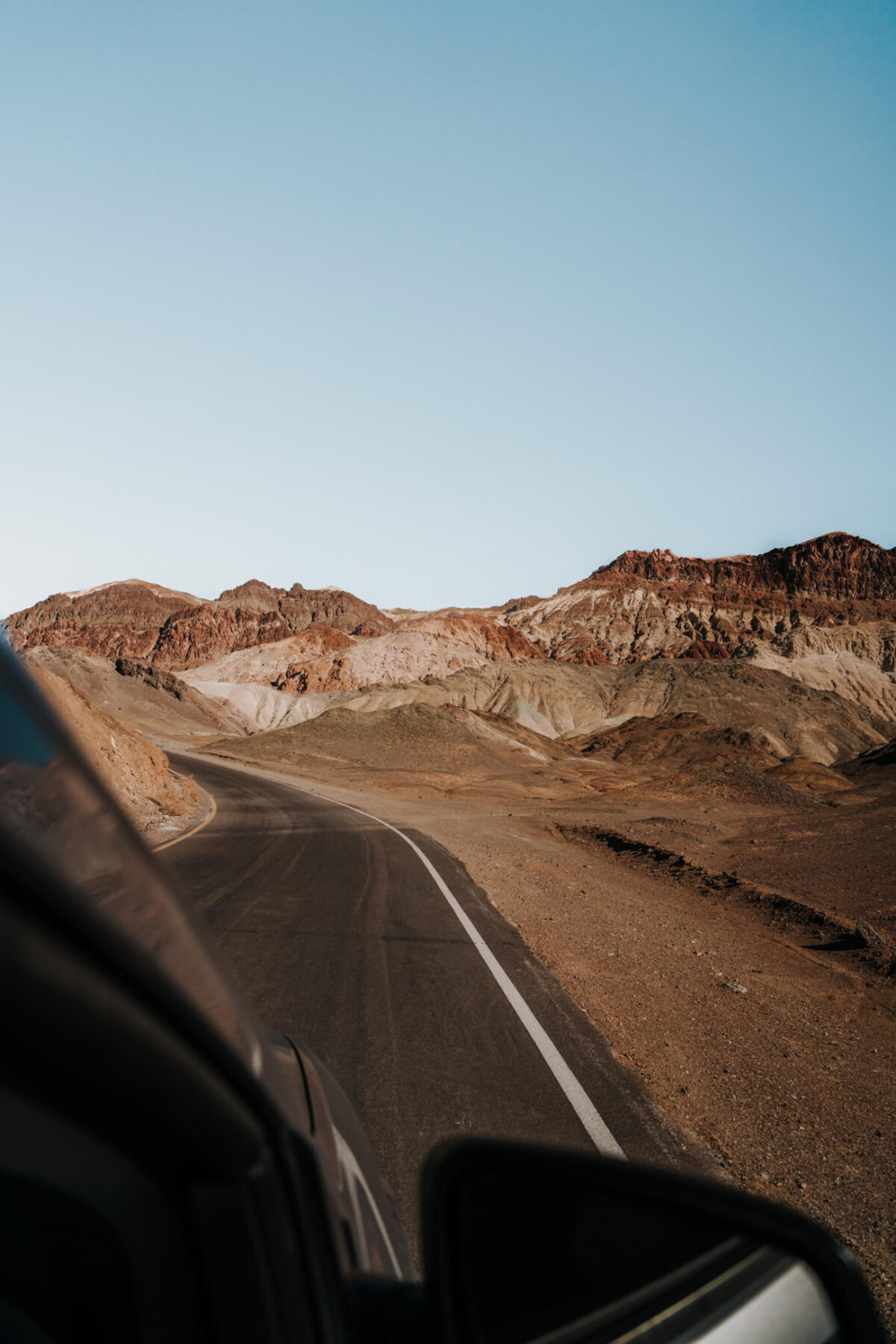
Now it’s time for a nine mile scenic drive through the iconic rainbow hills of Death Valley National Park. Once you get back to the trailhead at Golden Canyon, turn left onto Badwater Road and continue on for about 10 minutes. You’ll first bypass the exit to Artists Drive before turning left into the entrance a few more miles down the road.
There are pull outs along the way where you can (and should) stop to soak in the amazing views. The most notable stopping point is Artists Palette, which you’ve probably definitely seen photos of on Instagram if you’ve done some scrolling on just about any wanderlust account. You’ll find walking trails all over the place and can pretty much explore this area at your leisure!
As you walk around the picturesque hillside, you might wonder why it’s so colorful. According to the NPS, “These colors are from volcanic deposits rich in compounds such as iron oxides and chlorite, which creates a rainbow effect.”
Take a Break
At this point, it’ll be encroaching upon the hottest time of day. If you want to squeeze in another activity while you’re in this area, turn left once you exit Artists Drive and head down Badwater Road. You’ll see a sign for Devil’s Golf Course on your right within just a few minutes. In order to reach this spot, you’ll need to drive down a bumpy dirt road for about a mile. This will lead you to a wide open landscape filled with unique salt formations.
Otherwise, I suggest escaping the heat for a bit by heading back to your hotel or campsite. You can stop by the Furnace Creek Visitor Center and/or The Ranch’s General Store if you’re not staying nearby. They both have AC as well as some grab-and-go food options!
Just minutes away from the Furnace Creek Visitor Center, you’ll find Harmony Borax Works — another great option if you have extra time to kill. This quick stop will teach you about the history of borax mining in Death Valley.
Sunset and stargazing at Badwater Basin

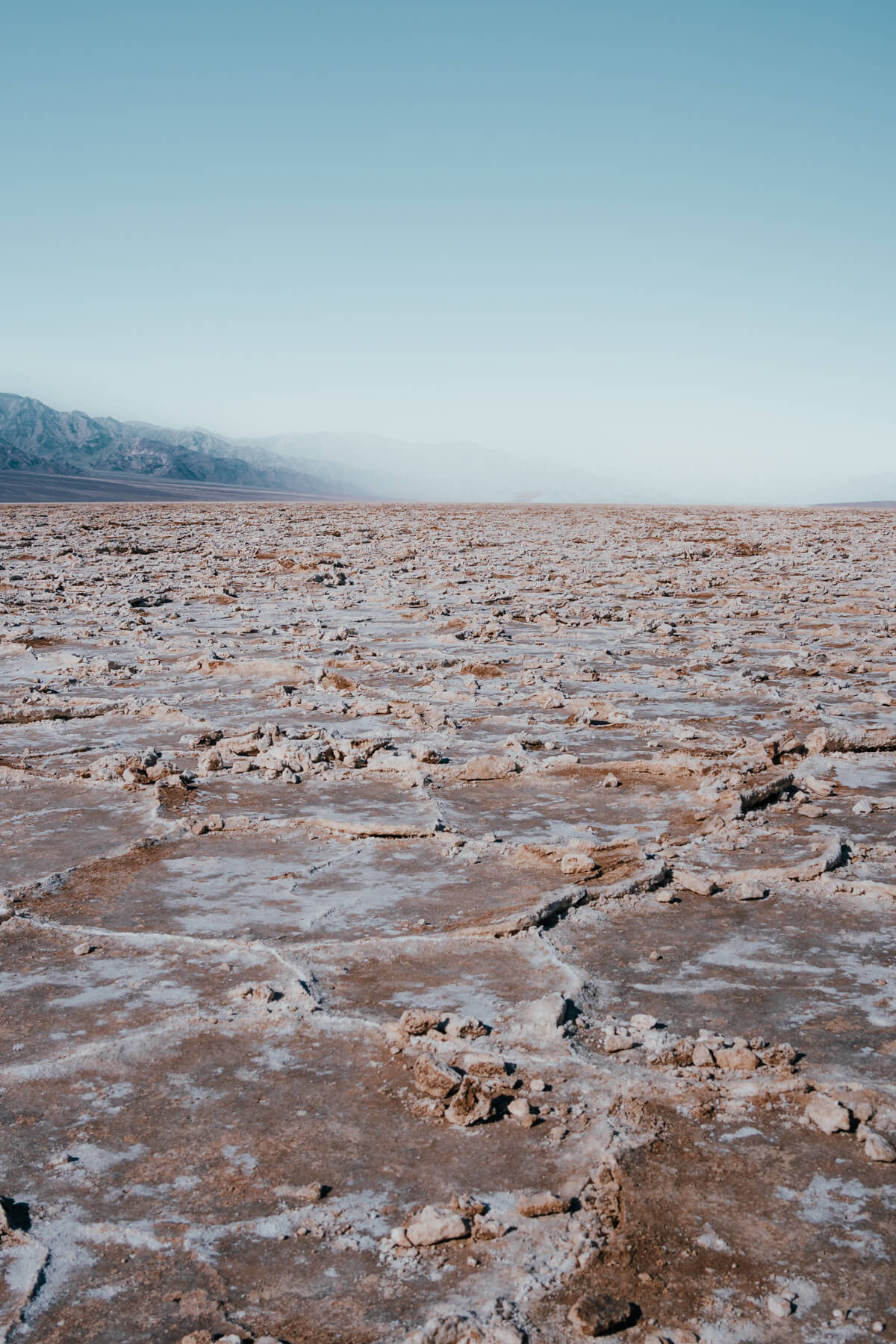
After recuperating for a few hours, head back out to watch the sun go down at the lowest point in North America! You’ll drive just a bit further down Badwater Road than where you were at earlier in the day. The salt flats at Badwater Basin are a 20 minute drive from the Furnace Creek Visitor Center.
Once you arrive, you need about 15 minutes to walk from the parking area out across the salt flats to where you can really see the patterns in the salt formations. The landscape is otherworldly! I feel like watching a sunset here should be on every adventure lover’s bucket list.
Fun fact: Death Valley is a “gold tier” International Dark Sky Park, meaning it’s one of the best spots for star gazing in the entire country. Consider hanging around after the sun goes down to admire the night sky! Just remember to pack a headlamp for the walk back to your vehicle.
Day 2: Dantes View, Twenty Mule Team Canyon, Ubehebe Crater, Salt Creek, and Mesquite Flat Sand Dunes
By starting day two at Dante’s View, you’ll tower over where you watched the sunset the night before. The panoramic views of Death Valley from this spot are absolutely incredible, which is why it’s a great place to start your day! Whenever you’re ready, head to Twenty Mule Team Canyon — another scenic drive within the park. Spend the rest of the morning venturing up to Ubehebe Crater and then circle back to spend the afternoon at two easy stops off Highway 190: Salt Creek and Mesquite Flat Sand Dunes.
Dantes View

The elevation at Dantes View (over 5,000ft) combined with its rugged landscape makes it one of the most impressive destinations within the park. This was the first spot I ever visited in Death Valley, and I was awestruck.
To get here, you’ll turn off Highway 190 and drive for 13 miles on Dantes View Road. You’ll know you’re almost there when the road gets much windier and steeper. Once you arrive at the parking lot for Dantes View, you’ll be rewarded with a bird’s-eye view of Death Valley. Make sure to look for Badwater Basin (where you watched sunset the night before) below you!
FYI – It tends to be VERY windy atop Dantes View and much cooler than other locations within the park due to its elevation. When I visited in January, I was wearing a down jacket and gloves and was still cold.
Twenty Mule Team Canyon

Like Artists Drive Scenic Loop, Twenty Mule Team Canyon is another scenic drive within the park. This one-way dirt road will take you through 2.5 miles of beautiful winding canyons and badlands. Although it’s right off Highway 190, you have to keep an eye out for the entrance because it’s extremely easy to miss.
There are tons of great photo ops along this road. Be on the lookout for places where you can pullover safely to get out for photos and some trails you can take for even better views!
The canyon is named after the 20-mule teams that hauled borax out of the desert. If you made it to Harmony Borax Works on day one, then you probably learned about the history of borax mining in Death Valley. You’ll pass right by Harmony Borax Works on your way from this point to your next destination, so stop by for a quick visit if you didn’t get the chance yesterday.
Ubehebe Crater
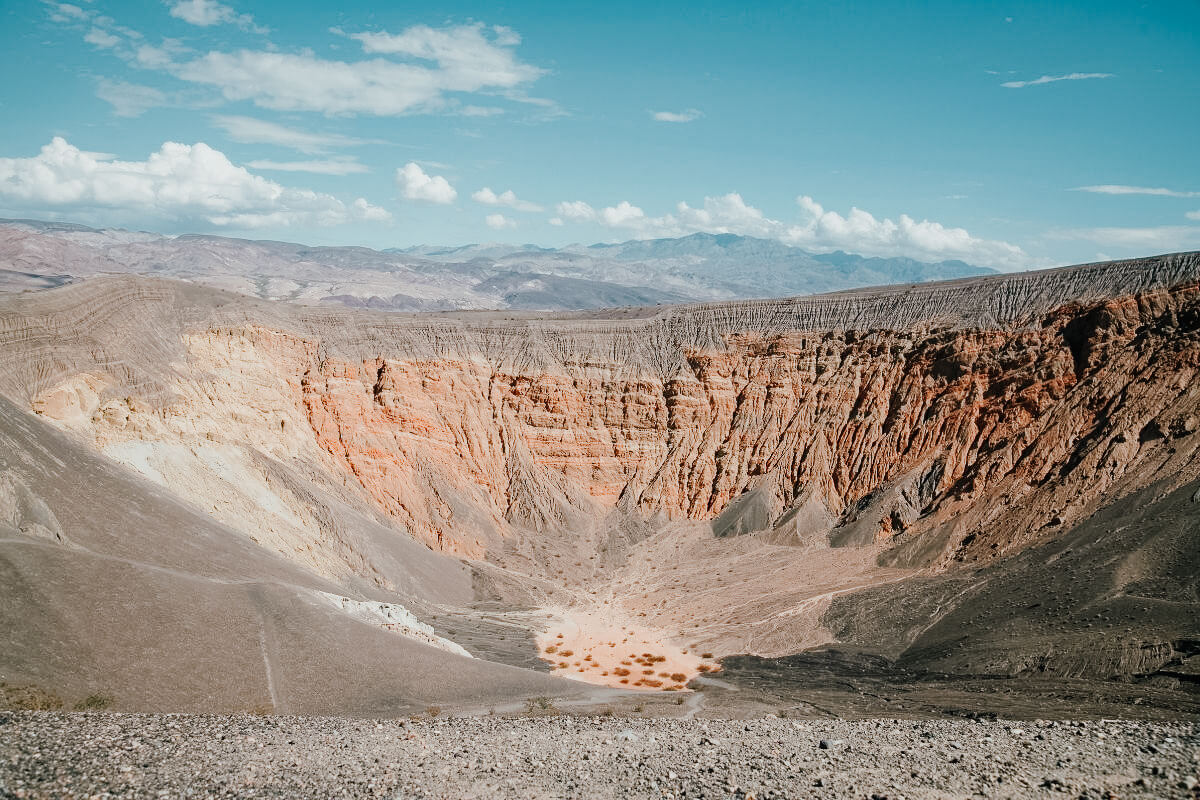
Ubehebe Crater is out-of-the-way, but worth visiting! Depending on when you visit, you might appreciate some extra time in the AC anyways. The 600ft deep volcanic crater is otherworldly!
You can either view the crater from the parking lot or get up close and personal. For something a bit more adventurous, I recommend the Ubehebe and Little Hebe Crater Trail! Make sure you have the energy left to get back out if you do choose to walk down into the crater.
Salt Creek
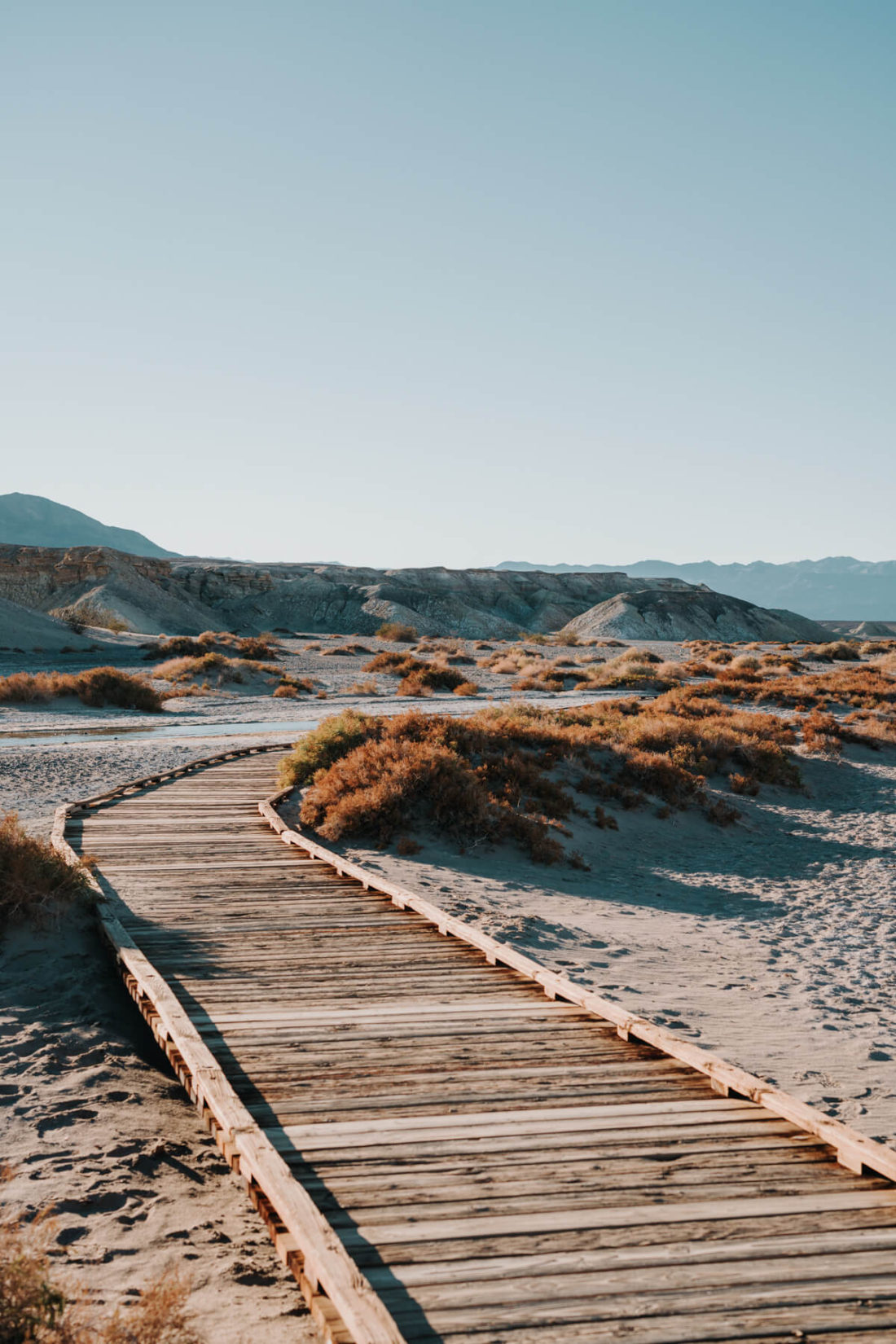
Hardly anyone talks about Salt Creek, and I don’t know why! It’s easily accessible and the landscape is stunning. You’ll drive south for about an hour to get there from Ubehebe Crater. Once you arrive and exit Highway 190, you’ll continue down a dirt road for just a few minutes before arriving at the trailhead.
The views are gorgeous even from the trailhead, but I suggest continuing down the boardwalk! The trail is a quick and easy 0.5mi loop. Depending on when you visit, you may or may not see water flowing through Salt Creek. It’s one of the few places where you can see water in this rugged desert landscape!
As you walk along the boardwalk (do not step off the boardwalk as this is an extremely fragile environment), be on the lookout for the Pickleweed plants and Pupfish. Pupfish only exist in this environment and are most likely to be seen during springtime since they move when this water dries up during the warmer months.
Mesquite Flat Sand Dunes

Sunset at Mesquite Flat Sand Dunes is an absolute MUST for any Death Valley itinerary. I can say that with 100% confidence because I skipped the sand dunes on my first trip to Death Valley (BIG mistake). I made sure to visit multiple times on my second trip!
The parking area is located right off Highway 190, but you’ll have to walk a bit to get across the dunes. Therefore, I recommend that you try to arrive at least an hour before sunset. How far you decide to walk is ultimately up to you, but you’ll notice less and less people the farther you venture out.
If you have more time in Death Valley, check out some of the other sand dunes locations!
Have you ever been to Death Valley National Park? If so, what was your favorite highlight? I wholeheartedly believe that this park should be on every adventure lover’s bucket list, and I hope you’ll find this Death Valley itinerary useful for planning a trip!
